Chat with ILD AI

Hi, I am ILD AI.

ILD AI 05:27 AM

In this educational session, Corinne Young breaks down the underlying mechanisms, progression, and management of idiopathic pulmonary fibrosis (IPF) and other interstitial lung diseases (ILDs). The discussion covers common genetic and environmental risk factors—including family history, smoking, and occupational exposures—and explains how chronic inflammation leads to fibrosis and loss of lung elasticity. Listeners gain a clear understanding of how progressive pulmonary fibrosis is identified through lung function tests (FVC, DLCO) and imaging changes over time. The presentation also addresses treatment strategies, highlighting when corticosteroids may be appropriate, why long-term steroid use is limited, and how newer antifibrotic and immunomodulatory therapies are improving outcomes for patients with fibrotic lung disease.
Related Webcast
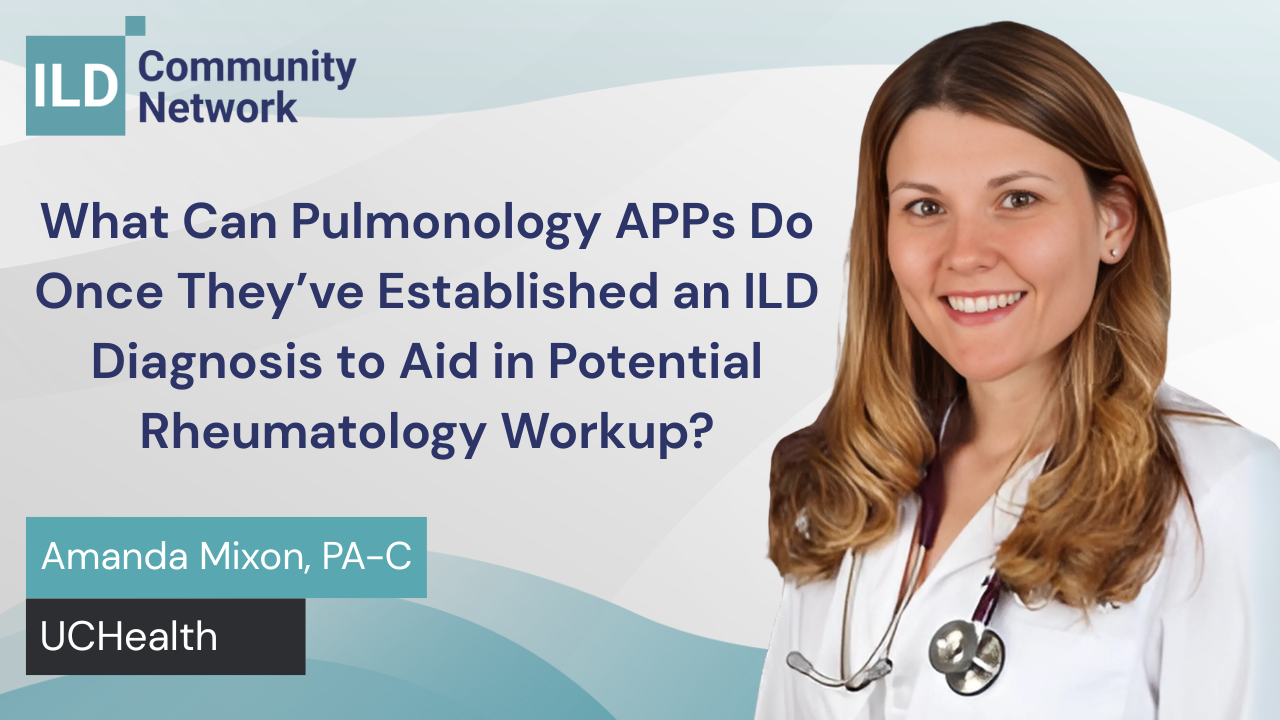

What Can Pulmonology APPs Do Once They've Established an ILD Diagnosis to Aid in Potential Rheumatology Workups?
 July 2025
July 2025
 01:42 m
01:42 m
Once you've confirmed a diagnosis of interstitial lung disease (ILD), what’s next? In this practical and fast-paced discussion, Amanda Mixon, PA-C, shares actionable steps for evaluating patients for underlying autoimmune or connective tissue diseases. Learn what symptoms to ask about—joint pain, morning stiffness, skin lesions, Raynaud’s, dry eyes or mouth—and how labs and rheumatology collaboration can support early detection and accurate diagnosis. This video offers clinical pearls for APPs working in pulmonology who want to strengthen their diagnostic acumen and build better cross-specialty communication with rheumatology colleagues. Topics covered: – What symptoms may signal underlying rheumatic disease in ILD patients – Key lab tests to guide your differential – When to refer to rheumatology – The value of real-time collaboration across specialties ILD care is better together. Watch now to improve your approach to autoimmune workups in pulmonary patients.


Scleroderma Treatment
 July 2025
July 2025
 01:52 m
01:52 m
In this focused discussion, Amanda Mixon, PA-C shares a practical approach to managing patients with systemic sclerosis (Scleroderma), with an emphasis on individualized care based on disease manifestation. From echocardiograms to pulmonary imaging, medication choices to vascular complications, this talk provides key insights into how APPs can tailor care to improve outcomes. Learn how to approach limited vs. diffuse Scleroderma, when to avoid glucocorticoids, and how to manage complications like digital ulcers and pulmonary involvement. Key takeaways include: – When to use echocardiograms, CT scans, and other diagnostics – Medication strategies: Mycophenolate, Selenomab, CCBs, ARBs, and more – Avoiding glucocorticoids in diffuse disease and managing risk of renal crisis – Treating symptomatically: digital ulcers, skin fibrosis, and blood flow support This is a must-watch for APPs in rheumatology, pulmonology, or primary care managing patients with Scleroderma.
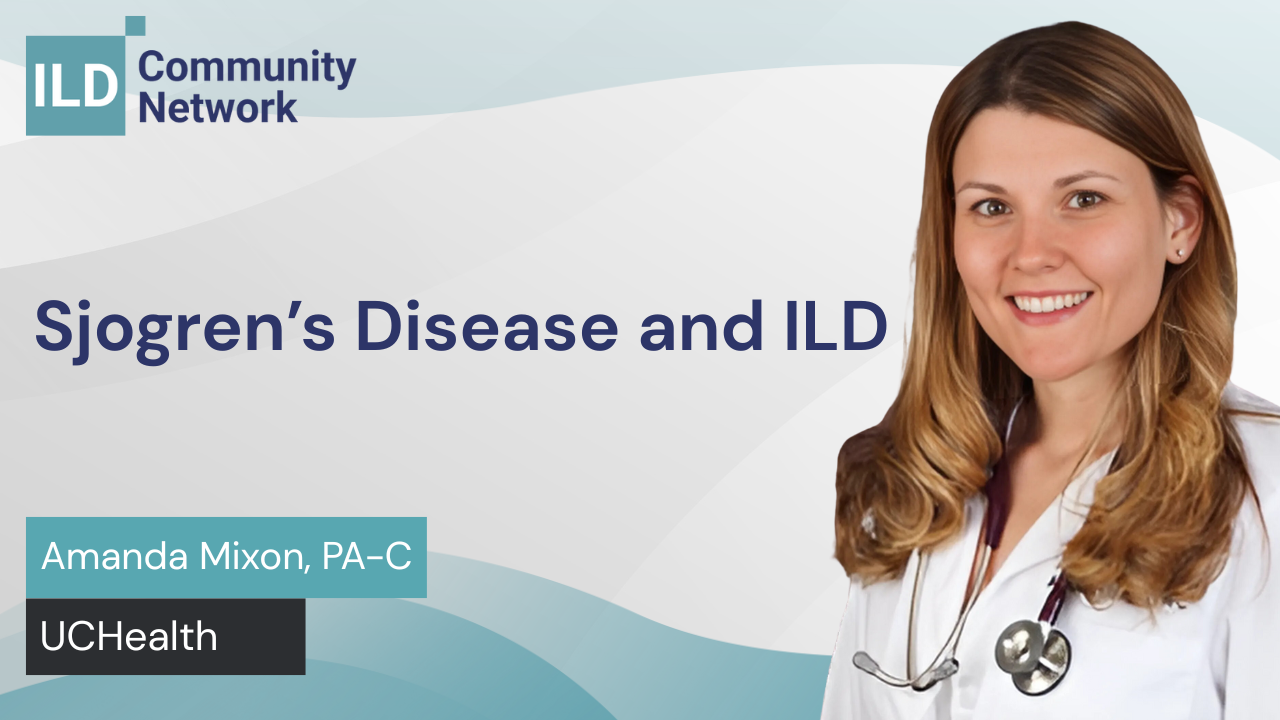

Sjogren’s Disease and ILD
 July 2025
July 2025
 01:43 m
01:43 m
In this concise and clinically insightful discussion, Amanda Mixon, PA-C, breaks down what to look for when suspecting Sjögren’s syndrome—an autoimmune condition marked by chronic dry eye and dry mouth, fatigue, and systemic manifestations. Often associated with SSA and SSB antibodies, Sjögren’s can overlap with interstitial lung disease (ILD), making it especially important for pulmonary and rheumatology providers to recognize early. Learn how to distinguish classic symptoms from environmental causes, when to consider antibody testing, and which patients may be at higher risk for more severe complications like ILD. What you’ll learn: – Clinical clues for identifying Sjögren’s in practice – Role of SSA and SSB antibodies in diagnosis – Recognizing extra-glandular manifestations: fatigue, arthritis, rashes – When to suspect ILD in Sjögren’s patients – Medication options and early steroid use considerations Whether you’re in primary care, pulmonology, or rheumatology, this video equips you to ask the right questions and understand the systemic risks behind what may appear to be “just dry mouth.”


Systemic Sclerosis Presentation
 July 2025
July 2025
 11:52 m
11:52 m
In this powerful and personal clinical reflection, Amanda Mixon, PA-C, shares her journey treating patients with diffuse systemic sclerosis (Scleroderma), including key lessons learned from working at a major Scleroderma center at Northwestern. From building trust with colleagues to managing life-threatening complications like Scleroderma Renal Crisis, this video offers invaluable insights for APPs and clinicians navigating this complex autoimmune disease. You’ll hear firsthand experiences treating patients with severe skin involvement, pulmonary fibrosis, digital ulcers, GI complications, and early vasculopathy. Learn why RNA polymerase III positivity is a red flag, how to differentiate diffuse from limited SSc, and why early diagnosis and treatment are essential. What you’ll learn: – What distinguishes diffuse Scleroderma from limited forms – Clinical signs to recognize early: Raynaud’s, skin tightening, telangiectasia – The dangers of steroid use and Scleroderma Renal Crisis – Why collaboration and early referral to SSc centers can save lives – Real stories and clinical pearls from treating high-risk patients This is a must-watch for any clinician managing autoimmune diseases—especially those treating interstitial lung disease, GI complications, or vasculitis related to Scleroderma.
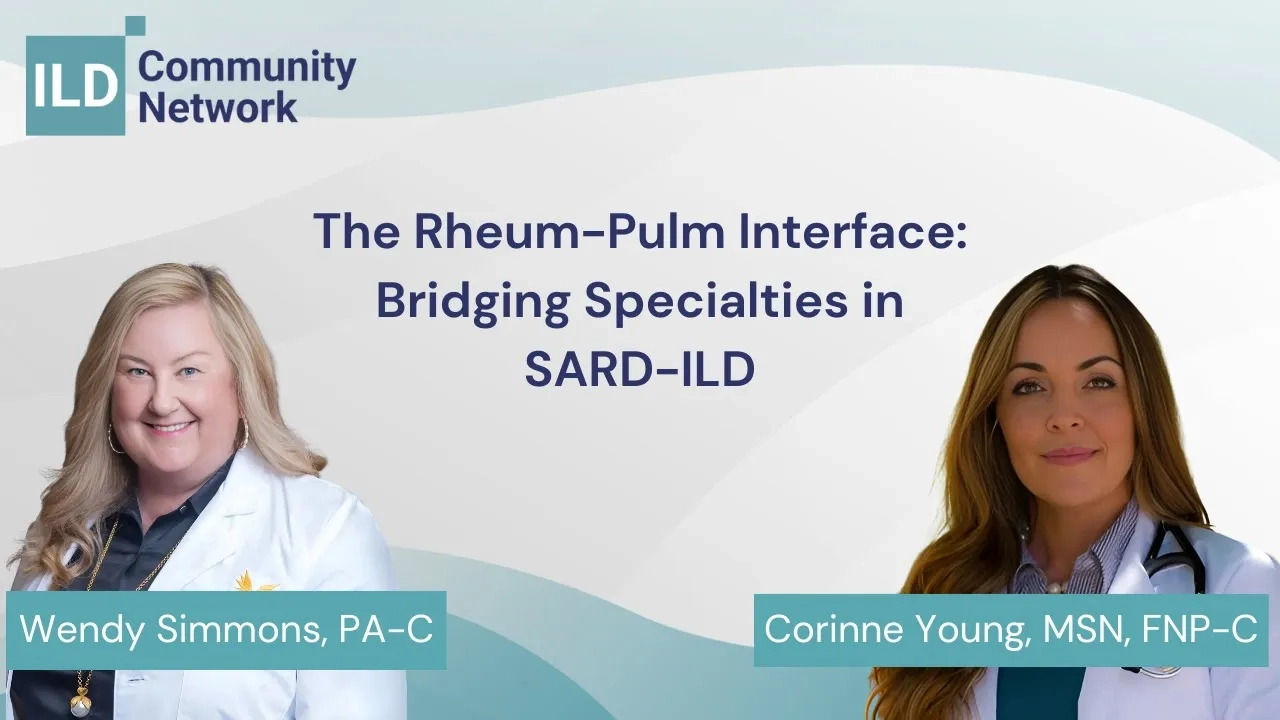

The Rheum-Pulm Interface: Bridging Specialties in SARD-ILD
 October 2025
October 2025
 11:21 m
11:21 m
In this session, Corinne Young and Wendy Simmons highlight the importance of a multidisciplinary approach to managing interstitial lung disease (ILD) in patients with systemic autoimmune and rheumatologic disorders. Collaboration between rheumatology, pulmonology, and radiology teams is key to early recognition, diagnosis, and treatment planning—especially given the high risk of ILD-related morbidity and mortality in conditions like systemic sclerosis, rheumatoid arthritis, lupus, and Sjögren’s syndrome. The discussion reviews ACR screening guidelines, emphasizing the role of high-resolution CT imaging, pulmonary function testing, and oxygen desaturation monitoring. It also covers evidence-based first-line and escalation therapies, including mycophenolate, cyclophosphamide, and rituximab, while underscoring the need for frequent assessment, early intervention, and coordinated care to improve patient outcomes.
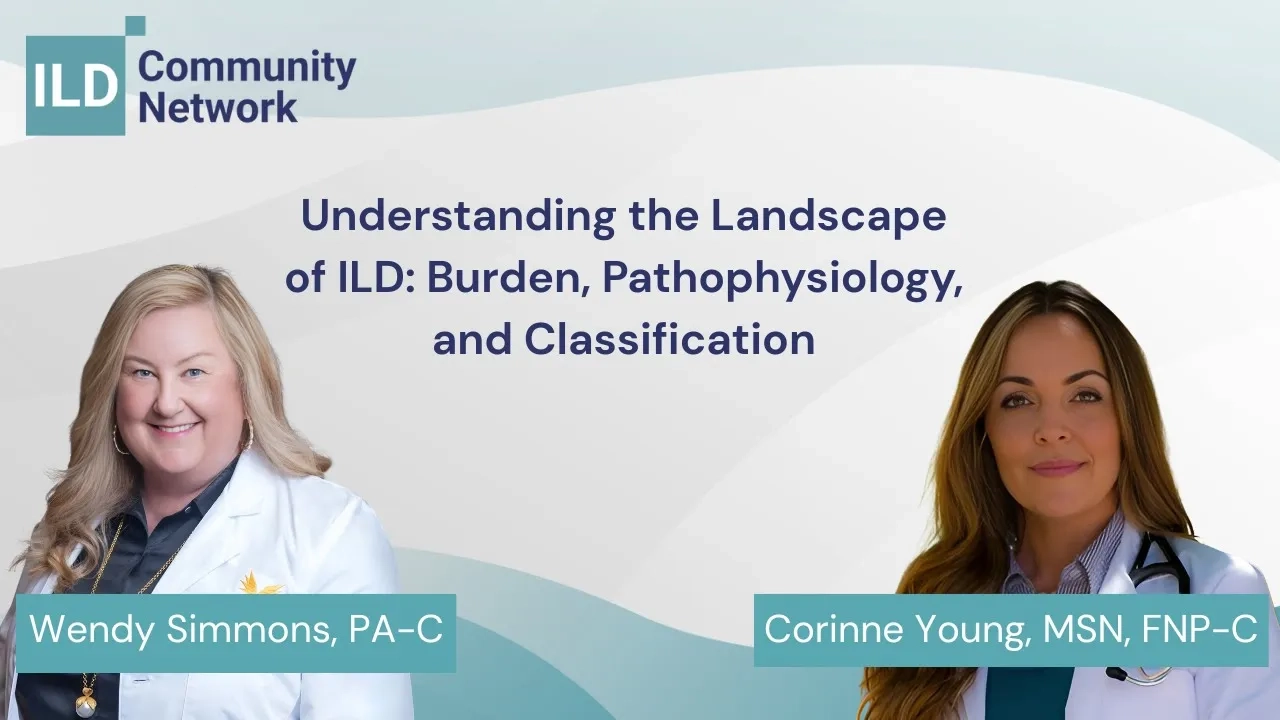

Understanding the Landscape of ILD: Burden, Pathophysiology, and Classification
 October 2025
October 2025
 20:49 m
20:49 m
In this presentation, pulmonary nurse practitioner Corinne Young and rheumatology physician assistant Wendy Simmons explore the complex relationship between interstitial lung disease (ILD) and connective tissue diseases (CTDs). Together, they provide a multidisciplinary perspective—highlighting how collaboration between pulmonology, rheumatology, and radiology leads to earlier diagnosis, better management, and improved outcomes. The session covers ILD classifications, common causes such as autoimmune disorders, environmental exposures, and drug toxicities, as well as diagnostic tools including high-resolution CT imaging, pulmonary function testing, and serologic assays. The speakers also discuss the importance of recognizing progressive phenotypes, understanding imaging patterns like UIP and NSIP, and tailoring therapy based on disease behavior. This session emphasizes that in ILD, time is lung—early recognition and coordinated care are essential to preserving function and extending quality of life.
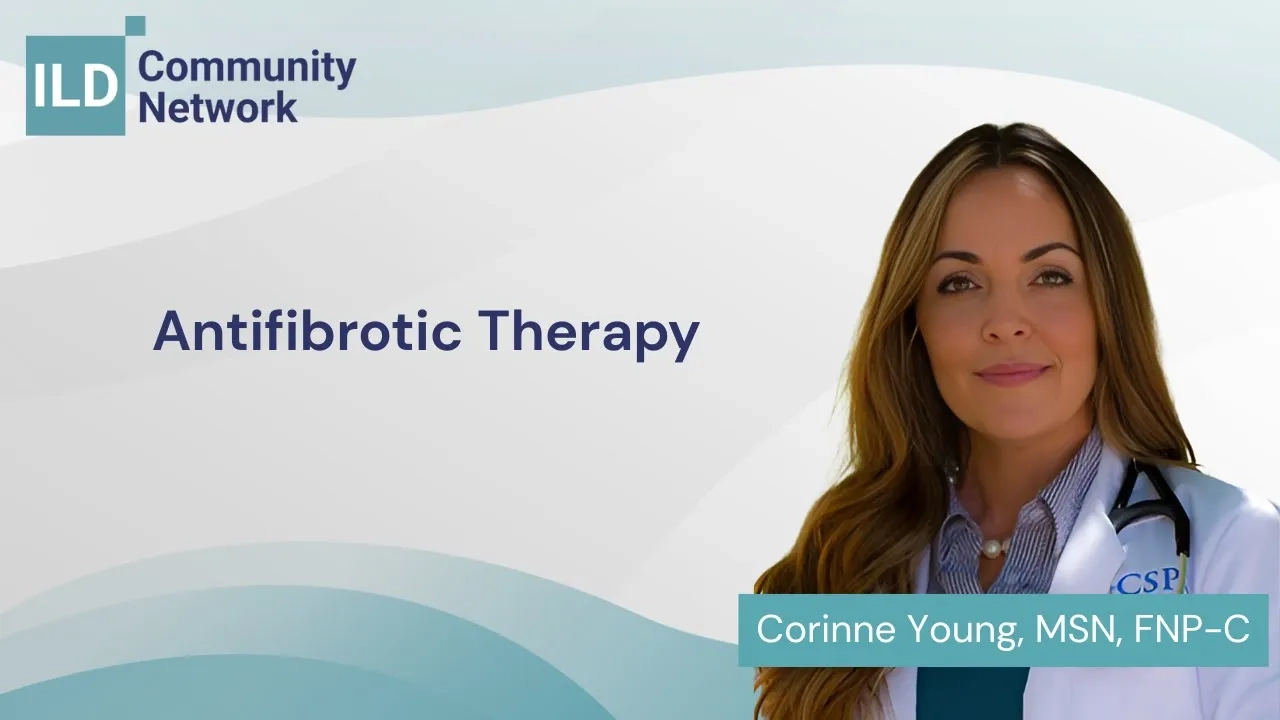

Antifibrotic Therapy
 October 2025
October 2025
 06:40 m
06:40 m
In this session, Corinne Young reviews the evolution of antifibrotic therapies for interstitial lung disease, beginning with the 2015 U.S. approval of pirfenidone (Esbriet) for idiopathic pulmonary fibrosis (IPF). Pirfenidone works by targeting TGF-β and TNF-α to slow fibroblast proliferation and collagen synthesis, though patients often experience gastrointestinal side effects and fatigue. The discussion also covers nintedanib (Ofev), a tyrosine kinase inhibitor that blocks multiple growth factor pathways (VEGF, FGF, PDGF) and is now approved for both IPF and other progressive fibrotic lung diseases. Clinical trials such as CAPACITY, ASCEND, INPULSIS, and INBUILD demonstrated that these antifibrotics significantly slow the rate of lung function decline and disease progression. The talk concludes by emphasizing careful side-effect management, liver monitoring, and appropriate patient selection to optimize outcomes with these cornerstone antifibrotic therapies.
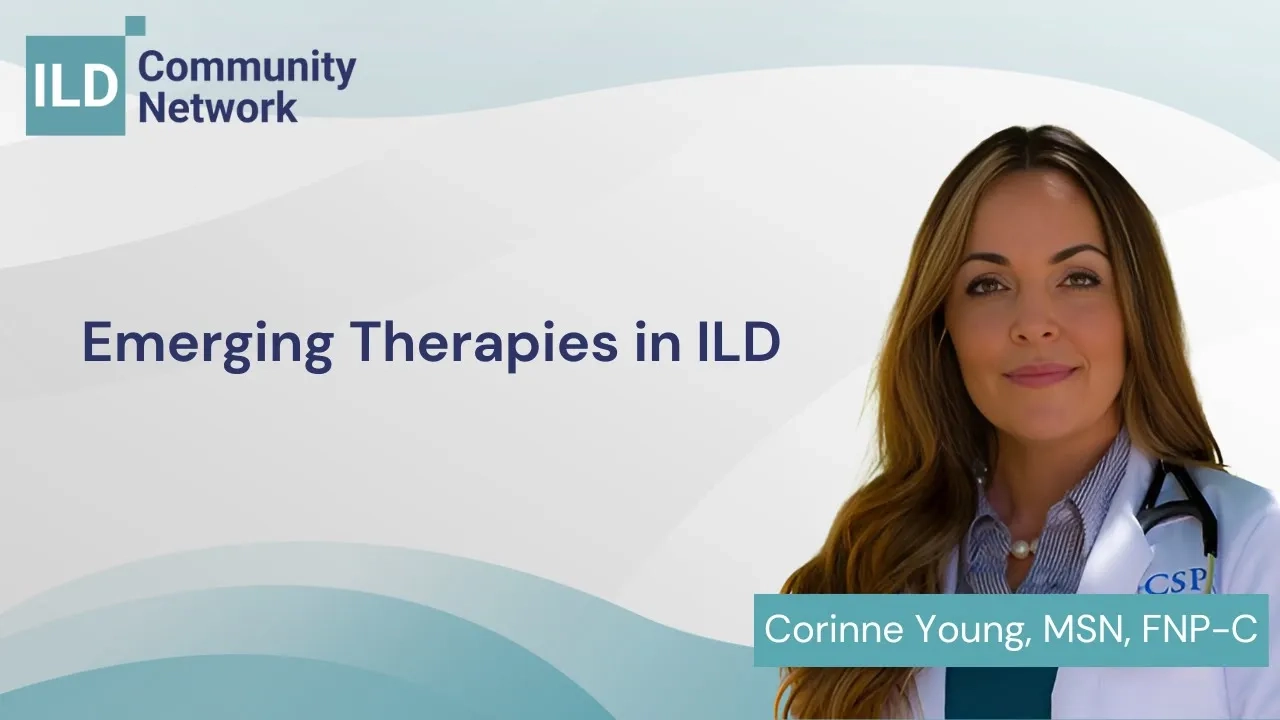

Emerging Therapies in ILD
 October 2025
October 2025
 07:37 m
07:37 m
In this presentation, Corinne Young reviews the latest advances in therapies for interstitial lung disease (ILD) and idiopathic pulmonary fibrosis (IPF), highlighting the promising results of nerandomilast, a phosphodiesterase-4B inhibitor with both antifibrotic and immunomodulatory effects. Phase 3 trials (FIBRONEER-IPF and FIBRONEER-ILD) demonstrated that twice-daily nerandomilast slowed lung function decline and improved outcomes across patient populations, including those with autoimmune-related disease. The discussion also covers the drug’s safety profile—showing fewer gastrointestinal side effects compared to existing antifibrotic agents—and emerging treatments such as inhaled treprostinil, which is being studied for pulmonary fibrosis beyond pulmonary hypertension. With multiple new agents and combination therapies on the horizon, these developments represent meaningful progress in the treatment and management of fibrotic lung disease.
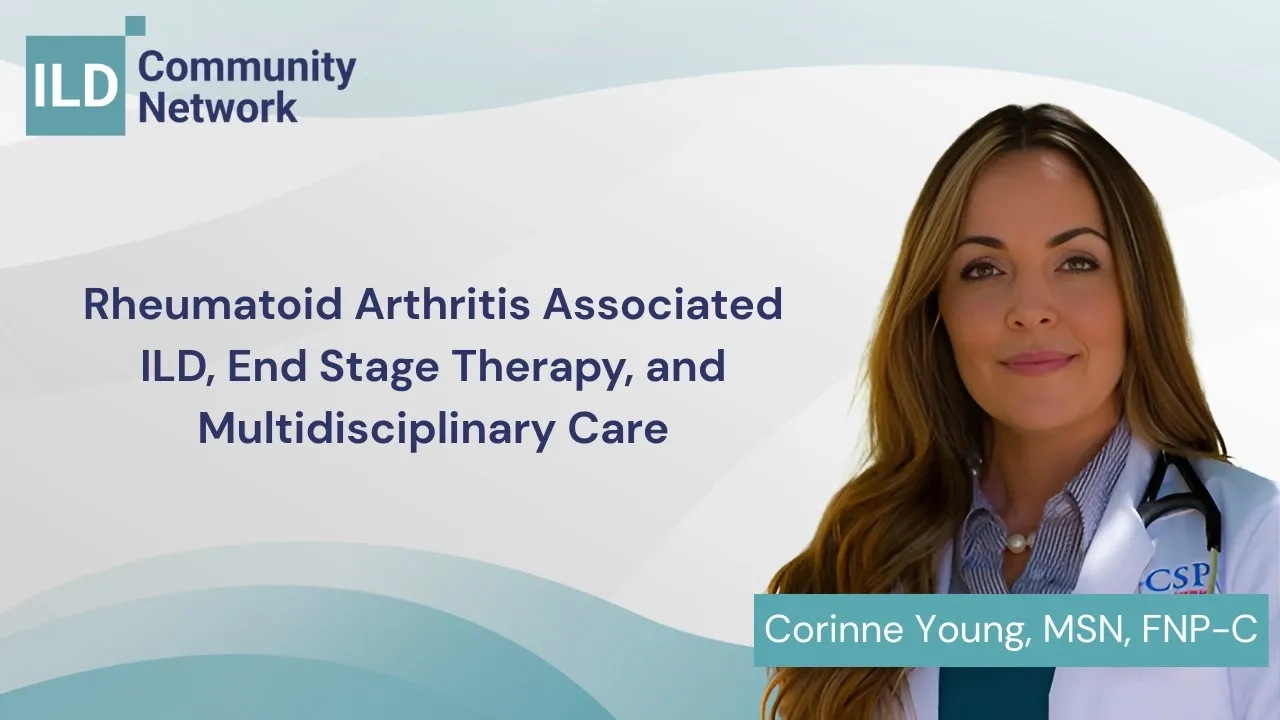

Rheumatoid Arthritis Associated ILD, End Stage Therapy, and Multidisciplinary Care
 October 2025
October 2025
 02:31 m
02:31 m
In this discussion, Corinne Young explores the complexities of managing patients with advanced interstitial lung disease, emphasizing the importance of early referral for lung transplant and cautious evaluation of unproven stem cell therapies. The conversation highlights how patients are sometimes misled into costly, non-evidence-based treatments abroad and underscores that only limited data exist for hematopoietic stem cell use in this setting. The speakers stress the critical role of multidisciplinary collaboration among pulmonology, rheumatology, gastroenterology, and cardiology teams, along with early conversations about palliative care and quality-of-life goals. With new therapies emerging, the focus remains on preserving lung function, aligning treatment with patient priorities, and ensuring compassionate, coordinated care for those facing progressive disease.


Limited Cutaneous Scleroderma Presentation
 July 2025
July 2025
 01:48 m
01:48 m
In this quick but focused clinical overview, Amanda Mixon, PA-C, explains how to identify and differentiate limited systemic sclerosis (also known as CREST syndrome) from diffuse scleroderma. Associated with centromere antibodies, limited scleroderma primarily affects the distal extremities and face, and while skin involvement is less severe, patients face distinct long-term risks—especially pulmonary hypertension. This video breaks down the classic CREST acronym (Calcinosis, Raynaud’s, Esophageal dysmotility, Sclerodactyly, and Telangiectasias), along with practical tips for early recognition and long-term management. What you'll learn: – How to recognize clinical features of limited scleroderma – The role of centromere antibodies vs. SCL-70 in diagnosis – Early signs like Raynaud’s and esophageal symptoms – What to monitor for in years 5–10: pulmonary hypertension, vascular disease – Differentiating CREST from diffuse disease This is an essential update for APPs and clinicians managing autoimmune connective tissue disease, especially in patients with progressive symptoms involving the skin, GI tract, and lungs.



 Back
Back 